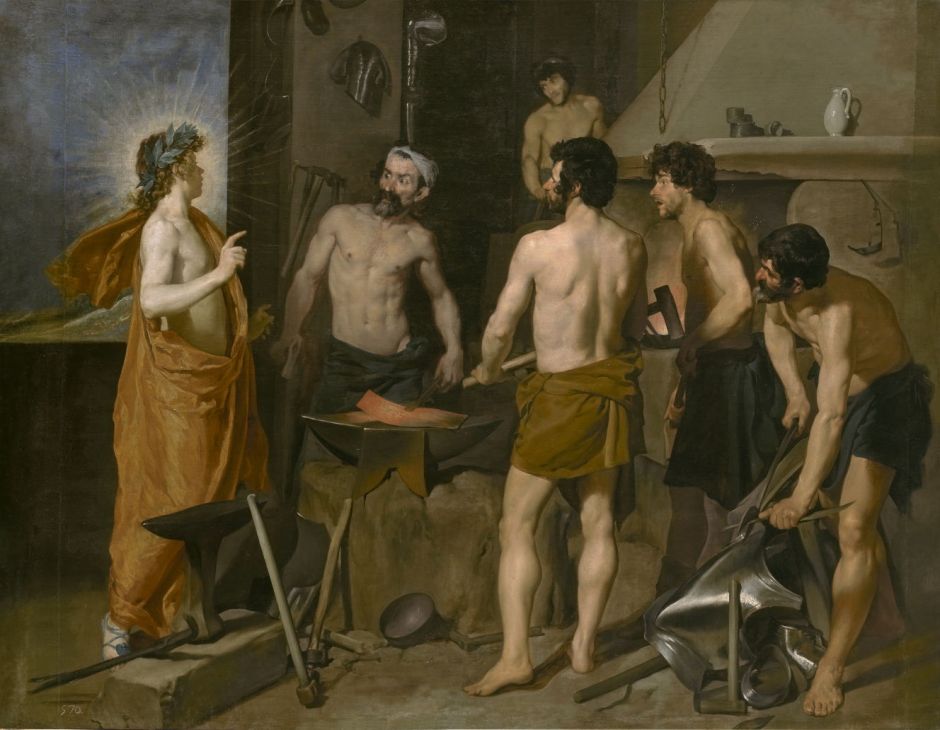There are always some more gods, but this article draws a close to my series of articles looking at different deities in paintings. In this and next week’s articles I provide a succinct summary and links to individual articles in the series. Gods are listed by their name in alphabetical order, including their best-known synonyms in classical Greek and Roman pantheons. You can find a matching guide to goddesses here. I hope you find this a useful identification guide.
Aesculapius (Medicine, Healing Arts), Greek Asclepius. Attribute a rod or staff with a single serpent (not Mercury’s caduceus with two or more serpents intertwined). Born by Caesarian section, taught medicine by the centaur Chiron, helped a snake as a boy, so the snake licked his ears clean. Daughters include Hygeia (cleanliness).
Asclepius (Aesculapius)
Aion (cyclical Time) – see Chronos

Apollo (Music and Dance). Broader responsibilities include archery, prophecy, the Sun chariot. Twin of Diana. Attribute the lyre, and associated with the Muses. Many myths, including the deaths of Niobe’s children, with his sister, and the musical contest with Marsyas. Unsuccessful in pursuing women such as Daphne, and fated with male lovers like Hyacinth.
Apollo
Ares – see Mars
Asclepius – see Aesculapius

Atlas, and his Titan brothers Prometheus and Epimetheus. Atlas was turned into stone by Medusa’s head, held by Perseus, and stands bearing the cosmos on his shoulders. Prometheus stole fire from the gods and gave it to mortals, for which he was chained to a rock to have his liver eaten by an eagle. Epimethius was given Pandora (the first mortal woman) as a gift by Jupiter.
Atlas, Prometheus and Epimetheus

Bacchus (Wine), Greek Dionysus. Associated with the grape harvest, drunkenness, ritual madness and ecstasy. Attributes a wand covered with ivy and topped off with a pine cone (thyrsus), panthers, drinking vessels, and wild disinhibited Bacchantes/Maenads. His chariot is towed by panthers.
Dionysus (Bacchus)
Caelus – see Saturn

Chronos (linear Time), Father Time, associated with the Zodiac, later the hourglass (sand timer) and scythe. Old, with white hair and a long beard. Confused with Aion (cyclical Time).
Chronos and Aion (Time)
Cronos – see Saturn
Cupid (sexual desire, lust), Greek Eros. Originally a young man, but increasingly young to being a cherubic infant. Son of Venus. Attributes a bow and arrows of desire, normally aimed at the figure about to fall in love. Usually winged and shown towards the top of a painting, in flight, may be blindfolded ‘love is blind’. Mischievous, sometimes shown either being teased by his mother, or up to tricks. Often seen with helpers or amorini.
Eros (Cupid)
Dionysus – see Bacchus
Epimetheus – see Atlas
Eros – see Cupid
Faunus – see Pan
Hades (the Underworld), Roman Pluto, Dis. Associated with Cerberus, the three-headed guard-dog of the Underworld. Abducted Proserpine/Persephone, daughter of Ceres, as a young girl, and lives with her as his partner during the winter half of the year, in the Underworld.
Hades (Pluto)
Hermes – see Mercury
Hypnos (Sleep) – see Thanatos
Janus (transitions), not Greek. Associated with gates, doorways, the start of the year. Has two faces on a single head, one looking back at the past, the other forward to the future (Ianus bifrons). In Rome, his gates were kept open in times of war, and closed during peace.
Janus
Jove – see Jupiter
Jupiter (king of the gods, thunder and lightning), Greek Zeus, also Roman Jove. Associated with a bundle of thunderbolts, and his eagle. Many myths of adulterous rapes of mortals, including Europa (as a white bull), Io (turned into a cow), Leda (as a swan), Semele (who was destroyed by fire as a result).
Zeus (Jupiter)

Ares (Mars)
Mercury (Messenger of the gods), Greek Hermes. Attributes winged sandals (talaria), brimmed hat (petasos) which may have wings, and rod (caduceus) with entwined serpents and possibly wings. Features as an emissary in many myths, notably the Judgement of Paris, and as the killer of Argus in the myth of Io.
Hermes (Mercury)
Mors – see Thanatos
Narcissus. Son of a water-nymph, Echo falls in love with him but can only echo his words. He falls in love with his own reflection, and is consumed by that passion. Transformed into the narcissus flower on his death.
Echo and Narcissus

Neptune (Waters, both fresh and salt), Greek Poseidon. Associated with his trident, dolphins, fish. Shown as the Old Man of the Sea, with flowing white hair and beard, and a chariot towed by dolphins or horses. Appears in the histories of Athens and Troy, and later of Venice.
Poseidon (Neptune)

Pan (Wild Nature), Roman Faunus. Non-Olympian, associated with shepherds and flocks, and with Bacchus and drinking. Attribute Pan pipes. A faun, human from the groin upwards, with the hindquarters and horns of a goat. Myths include King Midas. Attempted to abduct Syrinx, hence the origin of the pipes.
Pan (Faunus)
Phaethon who takes the Sun chariot from his father Phoebus (Apollo) and loses control of it. Destroyed by one of Jupiter’s thunderbolts to prevent the sun from burning the earth.
Phaethon
Pluto – see Hades
Poseidon – see Neptune
Prometheus – see Atlas
Saturn (Sky, also Greek Cronos), Greek Uranus (also Roman Caelus, Sky). Associated with stars and constellations. Castrated by Cronos, who devoured his own children, and was increasingly confused with Chronos (Time).
Uranus and Cronos (Saturn)

Thanatos (Death), Roman Mors. Commonly seen with Hypnos (Sleep). Confused with the Grim Reaper, derived from Chronos (Time), with scythe and sand timer.
Thanatos (Death)
Uranus – see Saturn

Hephaistos (Vulcan)
Zeus – see Jupiter

